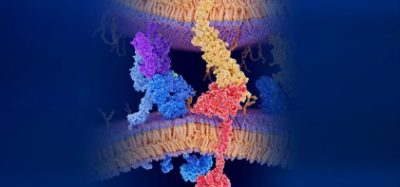Huntington’s disease and potential therapies
Posted: 22 August 2023 | Taylor Mixides (Drug Target Review) | No comments yet
In this exclusive interview with Young Kwon, CEO of Alchemab, we discuss new platforms that are revolutionising how researchers identify naturally occurring antibodies in resilient individuals, opening up new possibilities for the development of disease-modifying therapies.


This Q&A explores how pre-clinical research is being used to identify potential therapies for Huntington’s disease, a devastating condition that currently lacks disease-modifying treatments. By leveraging the power of naturally occurring antibodies, Alchemab’s research has significant potential to transform the landscape of neurodegenerative disease research and improve the lives of those affected by these challenging conditions.
How are researchers identifying naturally occurring antibodies in resilient individuals to develop disease-modifying therapies for Huntington’s disease?
We at Alchemab have developed a platform to profile and understand the unique features of the antibody response in resilient individuals. This enables us to discover potential therapies based on rare naturally occurring antibodies for hard-to-treat neurodegenerative diseases that impact many lives and that currently lack disease modifying treatments. With regard to Huntington’s disease, our unique approach of identifying shared B-cell antibodies from cohorts of people who show resilience to neurodegenerative disease has enabled us to identify potentially protective antibodies relevant for the condition.
What makes the potential therapeutic for Huntington’s disease unique compared to other treatments?
Our approach is to use an antibody to target the extracellular Huntingtin, which in disease is predominantly the mutated form of the protein. Extracellular mutant Huntingtin may play a role in seeding aggregates, though the exact clinical impact is still unknown. Unlike some other therapies in development, we wouldn’t expect our approach to interfere with the functioning of intracellular ‘wild type’ Huntingtin protein, which is important for healthy cell function.
What is the current landscape of treatment options for Huntington’s disease, and how does this potential therapy fit in?
There are no medicines approved that can stop the disease from progressing, although some treatments can reduce some of the symptoms caused by the condition. If successful, Alchemab’s approach could be transformative in its ability to modify the course of disease, either as a standalone therapy or in combination with some of the other Huntingtin-lowering modalities.
How are researchers working to address the challenges of developing disease-modifying therapies for neurodegenerative diseases like Huntington’s?
Around a third of efforts to treat Huntington’s disease are focused on targeting the protein Huntingtin, which is produced as a result of a faulty gene that is thought to be the root cause of the condition. For a disease like Huntington’s, which is caused by a single gene mutation thought to be the major pathogenic factor, it is in some ways easier conceptually for researchers to target that biology with a variety of approaches. Today’s researchers are using a wide range of modalities, including advanced approaches such as gene therapy and CRISPR, transcription regulators, RNA and protein degraders as well as more traditional approaches such as vaccines and antibodies. However, this disease has proven a hard nut to crack. The Huntingtin gene and the nature of the mutations were first discovered 30 years ago, in 1993. We know so much more about the molecular basis of disease since that seminal discovery, but the field has yet to break through clinically for patients.
What are the key findings and outcomes of the data presented on Alchemab’s potential first-in-class disease-modifying therapeutic?
The data shows that Alchemab’s unique antibody can bind various forms of pathogenic Huntingtin protein – be it aggregated or soluble, increase its phagocytosis by microglia and, most excitingly, immunodeplete the forms capable of “seeding” aggregation of Huntington protein. The latter feature was discovered in conjunction with Erich Wanker and Annett Böddrich at the Max Delbrück Center for Molecular Medicine, Berlin.
What are the potential implications of developing a disease-modifying therapeutic for Huntington’s, and for the field of neurodegenerative disease research overall?
The benefits for patients and their families would be enormous. As the nerve cells in the brain progressively degenerate, there is steady physical, mental and behavioural decline. With such a heavy burden of disease for patients, their families and caregivers, it’s vital for us to find new therapies to improve quality of life and give hope to those affected by the disease.
Author bio:


Young is Alchemab’s Chief Executive Officer and provides overall leadership to the company. Prior to joining Alchemab, Young held various leadership roles as a senior executive at Momenta Pharmaceuticals, most recently as Chief Financial and Business Officer, where he was responsible for business development, strategy, finance, investor relations, and commercial.
Before Momenta, Young was a business development professional at Biogen, driving various transactions, and worked at the venture capital firm Advanced Technology Ventures, investing in early-stage biotech and medical device companies.
Related topics
Cell Therapy, Cell-based assays, CRISPR, Drug Development, Drug Discovery, Gene Testing, Gene Therapy, Targets
Related conditions
Huntington's disease
Related organisations
Alchemab Therapeutics Ltd
Related people
Young Kwon (Alchemab Therapeutics)








